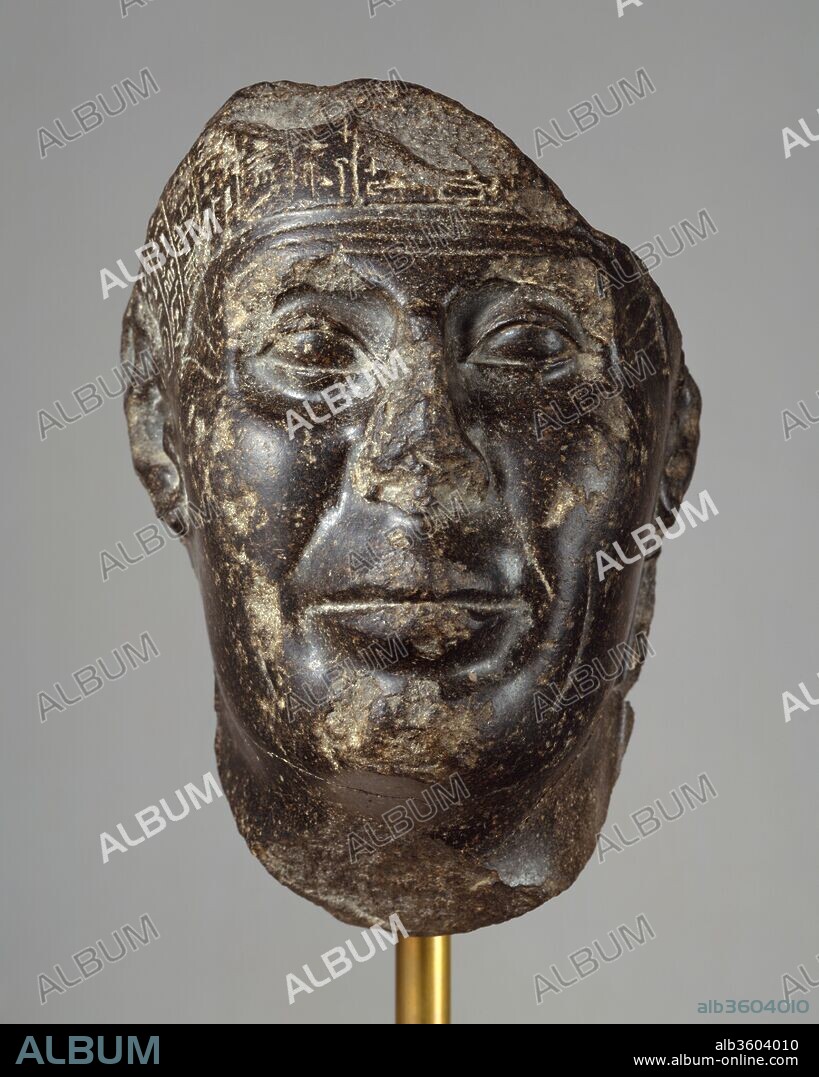alb3604010
Head from a Statue with Magical Texts

|
Añadir a otro lightbox |
|
Añadir a otro lightbox |



¿Ya tienes cuenta? Iniciar sesión
¿No tienes cuenta? Regístrate
Compra esta imagen

Título:
Head from a Statue with Magical Texts
Descripción:
Ver traducción automática
Head from a Statue with Magical Texts. Dimensions: H. 21.2 cm (8 3/8 in.); W. 14.5 cm (5 11/16 in.); D. 11.5 cm (4 1/2 in.). Dynasty: Dynasty 30. Reign: probably reign of Nectanebo II. Date: probably 360-343 B.C..
Magical texts like those on the Metternich stela (50.85) probably covered all but the face, feet, and hands of the statue to which this fragment belonged. The statue would have stood in a temple where it could be visited by persons wishing to be healed. Inscribed statues of this type can almost all be dated to the fourth century.
A man well-advanced in years is depicted, his skin soft and marked by fine creases but his small eyes and his wide mouth still sure. Realistic representations are known from late Dynasty 26 and probably continued to be made during the Persian Period, although little can be assigned to that interval with certainty; thereafter they knew continuous popularity from the fourth century until the end of the Ptolemaic Period.
Técnica/material:
BASALT
Periodo:
LATE PERIOD
Museo:
Metropolitan Museum of Art, New York, USA
Crédito:
Album / Metropolitan Museum of Art, NY
Autorizaciones:
Modelo: No - Propiedad: No
¿Preguntas relacionadas con los derechos?
¿Preguntas relacionadas con los derechos?
Tamaño imagen:
3360 x 4200 px | 40.4 MB
Tamaño impresión:
28.4 x 35.6 cm | 11.2 x 14.0 in (300 dpi)
Palabras clave:
 Pinterest
Pinterest Twitter
Twitter Facebook
Facebook Copiar enlace
Copiar enlace Email
Email
